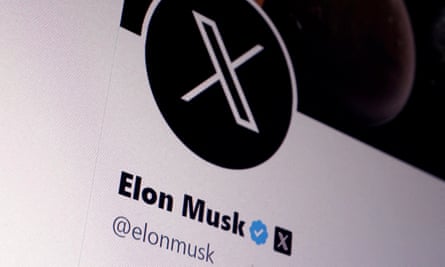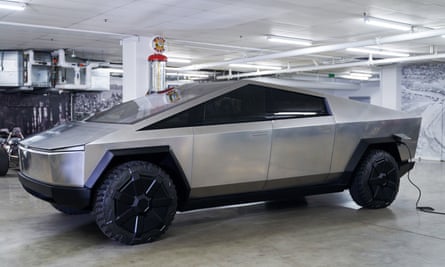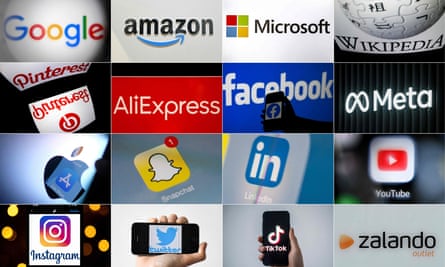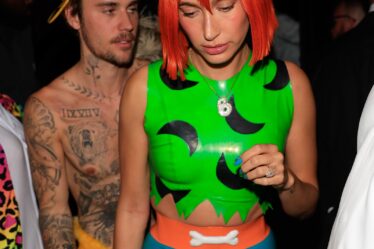
Elon Musk’s favourite movie quote, according to his biographer, is Gladiator’s “Are you not entertained?”
Some members of Musk’s considerable global audience were also horrified as controversial statements and management decisions grabbed the headlines yet again this year.
Musk’s brother, Kimbal, told Walter Isaacson, author of the Elon Musk biography published in September, that his sibling was a “drama magnet”. He added: “That’s his compulsion, the theme of his life.”
That impulse was on full display in 2023. Here are a few of the most notable stories involving the world’s richest man this year.
Challenging Mark Zuckerberg to a cage fight
At one point in 2023, Musk appeared to be taking his love of Gladiator too far after he challenged the Facebook founder to a fight over plans to launch a rival to Twitter called Threads.
Responding to reports that Zuckerberg intended to launch a Twitter-like platform, Muck tweeted: “I’m up for a cage match if he is lol.” Zuckerberg replied on Instagram: “Send Me Location”.
That Zuckerberg, a cage fighting adherent, seemed to mean business at least gave the story some momentum no matter its improbability. The Italian culture minister even said he was in discussions with Musk about staging the fight at a historic location in Italy.
At the same time, however, Musk was referring to a shoulder problem that might need surgery as, in typical fashion, he sowed doubt about just how serious he was being.
Zuckerberg decided his fellow billionaire was not being sincere and pulled the fight in August, posting on Threads: “I think we can all agree Elon isn’t serious and it’s time to move on.”
Rebranding Twitter
When he bought Twitter in October last year, Musk tweeted “the bird is freed”. In July, he got rid of it completely as he announced the platform would be rebranded as X, banishing the distinctive bird logo.
The rebranding was part of Musk’s vision of transforming the micro-blogging service into an “everything app” modelled on WeChat, the Chinese platform that allows users to perform multiple functions, from messaging to ordering a taxi and paying bills.
The name change aside, there has been no evidence of a major strategic transformation at the platform. X remains dependent on advertising for the majority of its income and is not yet the multifaceted business that Musk envisions.
Bruce Daisley, the former head of Twitter’s European operations, says a rebranding might have worked if it had been accompanied by a pledge to reduce damaging content on the platform.
“If Musk had drawn a line with what had happened in the past and said ‘we are going to be nicer, safer and more welcoming’ then a rebranding could have been effective,” he says. “But if anything X represents a toxification of the brand. He seems to have made it a couple of notches worse.”
Hiring a new CEO for X
Musk had capped his tumultuous 2022 with the announcement that he would resign as CEO of then-Twitter as soon as he found someone “foolish enough to take the job”. In May, he announced that Linda Yaccarino, the head of global advertising at NBCUniversal, the media and entertainment conglomerate, had been appointed CEO.
Yaccarino’s background as a highly rated advertising executive showed the importance of ads to X’s business model. Advertising accounted for 90% of revenues in 2021, although ad-related turnover has plummeted after Musk’s takeover as clients boycotted the platform over a range of concerns including the moderation of hate speech and the leadership style of its owner.
Yaccarino has struggled to restore lost revenues, due in no small part to the behaviour of Musk, who has retained an executive role focusing on technology and product design.

A biography is launched – and corrected
Isaacson’s Elon Musk biography was published in September, the product of two years of the writer shadowing his subject. The book was littered with insights and anecdotes, some of them known – Musk has a terrible relationship with his father; he is worried about artificial intelligence (AI) – but also some revelations.
One of the biggest stories from the book was quickly shot down by its subject, however. Isaacson alleged that Musk told his engineers at Starlink – a Musk-owned satellite communications business – to “turn off” Starlink coverage that would have facilitated an attack by drone submarines on Russia’s navy at its Sevastopol base in Crimea. The drones “lost connectivity and washed ashore harmlessly”, Isaacson wrote.
Musk denied this, saying there was no Starlink coverage in the area and he had in fact refused a request to switch it on. Musk posted: “If I had agreed to their request, then SpaceX would be explicitly complicit in a major act of war and conflict escalation.” Isaacson, who had written that Musk had enacted a “secret policy” to disable Starlink within 60 miles of the Crimean coast, issued a clarification supporting Musk’s version of events.

Tesla’s cybertruck starts deliveries
Tesla, the electric vehicle (EV) maker run by Musk, started US deliveries of its unique-looking and heavily hyped cybertruck in November. The truck is made of shiny stainless steel, shaped into flat planes and, according to footage posted by Musk, can withstand an arrow fired into its side by podcaster Joe Rogan.
Musk has said the unusual design is partly inspired by a car turned submarine in the 1977 James Bond film The Spy Who Loved Me. Speaking at the delivery event, Musk said: “Finally, the future will look like the future.”
Cybertruck is priced starting at $60,990 (£48,000) but the top-of-the-range version will cost $100,000.
Dan Ives, the managing director of the US financial firm Wedbush Securities, says the arrival of the cybertruck shows that Tesla’s range, led by the high-volume Models 3 and Y, can expand.
“Launching Cybertruck is important for the broader Tesla growth story over the coming years and also will prove to the doubters that Musk can successfully expand the Tesla halo effect as more consumers head down the EV path over the coming years,” he says.
Advertisers are given a send-off
X’s revenue crisis deepened in November when an antisemitism row consumed the platform. First, Media Matters, a US campaign group, said it found that advertisements by companies including IBM, Apple and Oracle were being placed alongside antisemitic content on the platform. Then Musk used his X account to agree with an antisemitic post.
Apple, IBM and Disney were among the brands that paused advertising. This prompted an extraordinary outburst from Musk at an event in New York, where he said: “If someone’s going to try to blackmail me with advertising, blackmail me with money, go fuck yourself.”
X is also suing Media Matters and the Center for Countering Digital Hate over their research into the platform. Bloomberg reported this month that 2023 ad sales were expected to nearly halve to $2.5bn this year, compared with about $4.5bn in 2021. Musk is making a rebound unlikely.
Musk rejoins the AI race
In March, Elon Musk and other tech professionals and experts, including the Apple co-founder Steve Wozniak, signed an open letter calling for a six-month pause in the creation of powerful AI systems. This didn’t happen and in July Musk, a co-founder of ChatGPT developer OpenAI, decided he had better re-enter the race with a new company: xAI.
Musk said his system would be safe because it would be “maximally curious” about humanity. And heavily sarcastic, it turned out. The first xAI product was Grok, a chatbot that when asked to roast its creator after its launch to X subscribers this month, called the Tesla CEO a “giant manchild”. It added: “At least you’re keeping busy while the rest of us are trying to save the planet you’re so eager to leave.”
Musk also attended the global AI safety summit at Bletchley Park in the UK and dominated the headlines with a warning that the technology was ““one of the biggest threats to humanity”.

Disinformation gets X into trouble
In December, the European Union opened formal infringement proceedings against X under the Digital Services Act (DSA), which came into force in August. The suspected breaches of the DSA, which enforces safety standards for social media platforms, include breaking obligations to counter illegal content and disinformation.
There were signs that an investigation was coming. The platform’s coverage of the Hamas attacks on Israel brought a warning from the EU. On 10 October, it told X that the platform was “being used to disseminate illegal content and disinformation in the EU” after the attacks.
Nic Newman, a senior research associate at the Reuters Institute for the Study Journalism, said X was not the reliable news source it once was.
He said: “Twitter [now X] has become a shadow of its former self. It’s become less useful for journalists – and for ordinary people – as a place to find, discuss and share news. One of the main reasons for that is the rise in hateful content now shown by multiple studies.”



